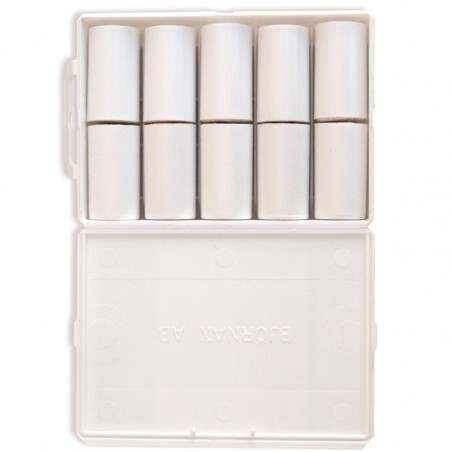The present study investigated the subsequent nursery performance of pigs administered a federally-licensed autogenous Streptococcus suis/Haemophilus parasuis bacterin applying this vaccination regimen by the intranasal (IN) route as an alternative to the traditional intramuscular (IM) route of injection.
A commercial sow farm of 2,000 sows in North Carolina experiencing significant nursery mortality from S. suis and/or H. parasuis infection was selected for evaluation of the different vaccination routes/regimens of piglets. Enrollment occurred at the time of processing at 3-5 days of age. Animals were randomly assigned to one of four vaccination regimens: 1) IN administration at processing and repeated at weaning; 2) IN administration at processing and IM injection at weaning; 3) IM injection at processing and repeated at weaning; 4) IN administration at processing only. Piglets within litters were vaccinated so as to equally represent each of the four treatment groups as much as possible. At weaning, treatment groups of pigs were not sorted to separate pens. Serum samples were collected from each of the four treatment groups at approximately three weeks after the weaning vaccinations. The samples were analyzed by ELISA. Over the five weeks of study observation, the parameters recorded were pre-weaning mortality, percent nursery mortality, percent treated animals (antibiotic injected upon presence of clinical disease), and the percent poor quality pigs at end of nursery phase.

During the nursery phase, the IN/IN and IN/IM vaccinated groups had average mortality of 3.70% and 9.13%, respectively. The average mortality observed in the IM/IM vaccinated group was 5.03% whereas the average mortality observed in the IN vaccinated (only at processing) group was 1.42%. Across treatments, the type of vaccine administered did not significantly affect the mortality rate in the nursery. For total mortality which included both the pre-weaning and nursery mortality observed, the IN/IN and IN/IM groups had average mortality of 12.7% and 14.5%, respectively. The IM/IM group was 12% whereas the average total mortality observed in the IN (only at processing) group was 11.3%. Across treatments, the type of vaccine administered did not significantly affect overall mortality. For animals treated, the IN/IN and IN/IM groups had an average treatment rate of 8.78% and 9.53%, respectively. The IM/IM group was 7.63% while the average treatment rate observed in the IN (only at processing) group was 6.88%. Across treatments, the type of vaccine administered did not significantly affect the rate of antibiotic treatment of pigs during the nursery phase. For nursery pigs grading as poor quality, the IN/ IN and IN/IM groups had average poor quality of 22.60% and 24.53%, respectively. The IM/IM group was 22.65% whereas the rate of poor quality pigs observed in the IN (only at processing) group was 22.23%. Across treatments, the type of vaccine administered did not significantly affect the percentage of poor quality pigs observed at the end of the nursery phase. Of the animals initially enrolled at processing, the nursery performance for the parameters measured showed no differences when comparing vaccination treatment groups either by route of administration or by regimen.
It is well accepted that killed vaccines stimulate humoral immu- nity resulting in the production of both IgG and IgM antibodies. Interestingly, the majority of animals in each of the treatment groups in this investigation also responded with measurable ELISA IgA titers to H. parasuis (vaccine strain) indicating that the pigs had largely (> 80%) seroconverted. The lower rate of IgA titers elicited by the IN (only at processing) group was the exception to this trend. In addition, the IN/IM and IM/IM groups were the only treatments that resulted in > 80% rate of se- roconversion as measured by IgG titer. Pigs in this study appeared to respond very similarly between the IN and IM routes at the time of processing when boosted at weaning by the IM route. In the commercial setting, the intranasal administration technique has several distinct advantages when compared with traditional parenteral vaccination including ease of administration at processing, lessened risk of needle loss, and reduction of work-load. Furthermore, the intranasal route may be less susceptible to maternal immunity interference. The overall comparable results when using intranasal administration in this study invite further investigation into this novel approach as an alternative to parenteral injection.
R. Jones, B. Heins, G. Weaver, J. Kula, B. Lin, W. Johnson. Field evaluation of the intranasal route as an alternative for administering Streptococcus suis and Haemophilus parasuis bacterins. 2016 AASV Anual Meeting.





